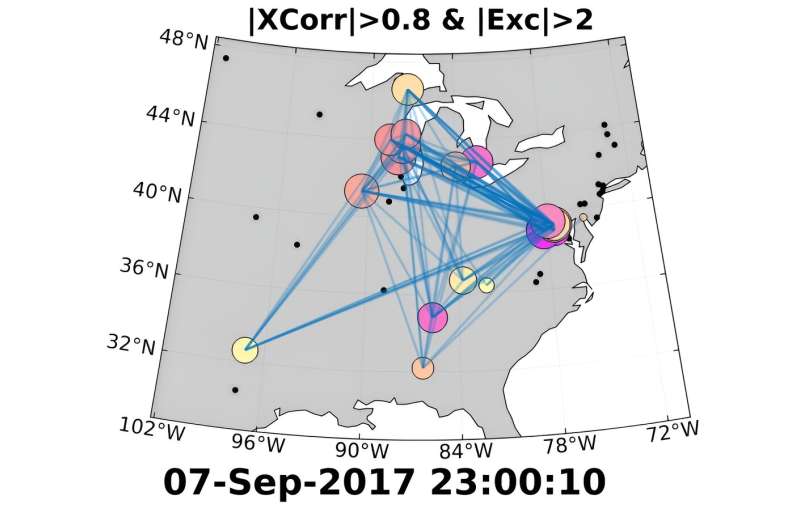This article has been reviewed according to Science X's editorial process and policies. Editors have highlighted the following attributes while ensuring the content's credibility:
fact-checked
trusted source
proofread
Washington DC among US cities most vulnerable to space weather, scientists say

Several cities in the United States—including the nation's capital—have power grids particularly vulnerable to the threat of space weather—but experts are still trying to understand why.
Researchers at the British Geological Survey (BGS) found that certain regions of the US are more at risk from geomagnetic storms, which occur when the sun spits out solar flares and coronal mass ejections (CMEs).
These are bursts of gas and magnetic fields which erupt into space from the solar atmosphere.
They can cause geomagnetic storms that have the potential to damage infrastructure both in Earth's orbit and on its surface, ranging from satellites to underground pipelines.
Two of the cities with power grids found to be most vulnerable to the effects of such space weather are Washington DC and Milwaukee, according to Dr. Lauren Orr of the BGS, who is presenting her findings at the National Astronomy Meeting at the University of Hull.
"We have identified certain regions of the US (Washington DC area and Milwaukee) which are repeatedly appearing as 'highly connected' in our network, and hence, are possibly regions particularly vulnerable to the effects of space weather and may benefit from further monitoring," she said.
Dr. Orr added that there were "many reasons" the cities may be more at risk to the impact of geomagnetic storms, including "electrical conductivity of the ground, the physical construction of the power grid in those areas, or the location of the auroral currents in the sky."
However, she cautioned that further work was needed to investigate what about these areas makes them so-called 'supernodes' in the network.
Severe space weather is of growing concern to scientists across the globe and is now considered to be as likely to occur as a pandemic, with an impact that is equivalent to extreme temperatures or flooding.
Geomagnetically induced currents (GICs) are one such hazard which can cause damage to power lines and transformers. In the past, widespread blackouts have been reported as a result of transformer damage during geomagnetic storms.
"Network science is now a common tool to quantify the resilience and robustness of power grids to both deliberate attacks and those caused by random failures or natural disasters," Dr. Orr explained.
A network is made up of nodes and edges which could be anything from computers linked via the internet, to friends on Facebook, or transformers linked via cables.
"Having previously had great success using network science to uncover patterns within the auroral electrojet we would again combine the fields of network science and space weather to capture the network response to GICs," Dr. Orr said.
"By applying known reliability parameters to the GIC network we can identify areas or transformers at high risk."
This is important, she added, because "these areas could be modified during a geomagnetic storm to prevent transformers burning out and to limit damage to the wider power grid."
The work has been carried out in collaboration with Professor Sandra Chapman, of the University of Warwick, and Dr. Ryan McGranaghan, of NASA's Jet Propulsion Laboratory in California.
Provided by Royal Astronomical Society




















